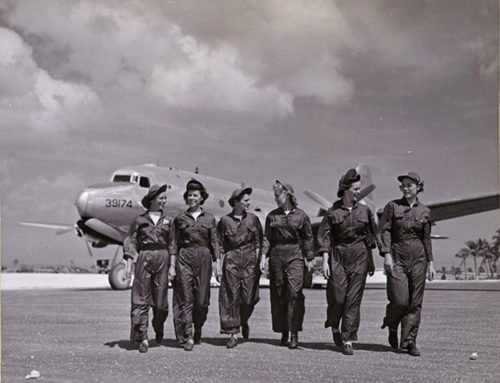On June 26th 1917, 14,000 U.S infantry troops landed in France and entered world War I. While the war began in 1914, this year marks the 100th anniversary of the United States entrance into the war. In honor of this milestone, the museum opened a new exhibit called “The Great War- Through the Periscope.” This week we would like to share five submarine World War I facts from this new exhibit. While submarines have been used in earlier wars, this was the first time they had a more powerful presence and set the stage for their future involvement in military conflicts.
- Did you know German U-boats came as far up the coast as Connecticut?
Prior to 1917, the United States maintained neutrality and maintained a friendly distance with the German U-boats. Deutschland, a German merchant submarine arrived in Maryland in July of 1916. In
November, she returned to the United States, but this time to New London. Both times Deutschland was able to load up on raw materials that would help the German war effort. All friendly intentions vanished once America joined the war on the allied side in 1917. From April to July of 1918, German U-boats were able to sink several ships off the Atlantic coast from Virginia to New Jersey. In July of 1918, U-156 attacked a town in Cape Cod with a deck gun. This was the first time since the Mexican American War that the United States was attacked by a foreign power at home and the only time in WWI. A total of 91 vessels were sunk off the American coast by German U-boats.
- Did you know that the Naval Submarine Base was built in part because of seeing the power of German U-boats?
Naval Submarine Base New London was the United States’ first permanent submarine base and opened in 1916. At Fort Trumbull, just down the river, experiments on how to detect submarines were conducted. Having seen the potential for submarines as a weapon of war prior to joining the war, the United States opened the base and school. Jules Verne, who wrote Twenty Thousand Leagues Under the Sea, is quoted as saying, “The next great war may be largely a contest between submarine boats.” Verne’s prediction would turn out to be true as submarine capabilities were expanded after the war.
During WWI, Germany was the only country to use submarines as more of a fleet service than as simple coastal protection. By WWII, submarines would play an integral role in US victories. By studying German U-boats captured during the war, the Navy was able to improve on its developments of standardizing its submarine fleet in terms of size, speed, endurance, and armament. The turn of the century brought with it much needed inventions that would allow submarine development to flourish. Such devices include the gyroscopic compass for navigation, hydrophones for listening underwater, pressed steel for hulls and diesel engines.
- The United States almost joined the war in 1915, rather than 1917.
U-20 sunk the RMS Lusitania killing 1,198 passengers including 128 Americans. The Lusitania was an ocean liner that briefly held the title of largest passenger ship until her sister ship was constructed. Germany had abandoned the established rules for sinking a merchant ship, primarily to announce their intentions of sinking a vessel, allowing the crew to abandon ship. Germany claimed that since the ship was carrying war munitions she could be considered a military vessel. Two of the Americans who died in the sinking were Alfred Vanderbilt and Newport News shipbuilding President Albert L. Hopkins. With America approaching a decision to break its neutrality and enter the war, Germany rescinded the policy of unrestricted submarine warfare. With Germany once again following the established rules, America backed off from declaring war on Germany. In 1917, Germany once again became desperate for a
conclusion to the war and returned to the tactic of unrestricted submarine warfare. While the U-boats returning to terrorize the high seas was not the only reason America decided to finally enter the war, it did play a major contributing factor.
- The above poster was just one of many propaganda posters that played a major role in enlisting new recruits and boosting moral on the home front.
World War I was the first war to have a global influence, and not just because of the amount of countries involved. Mass printing allowed propaganda posters to be used on all sides and to serve many purposes. WWI was also the first war to be caught on motion picture. The museum exhibit showcases a small video of submarines. This footage is only a small snapshot of what was captured for the first time by filmmakers who were on the frontlines. These films took those posters and brought them to life in a way never before possible. Reordered sound allowed Americans to hear the sounds of the front line and motion picture and posters allowed them to see it. With the sinking of the Lusitania, the war hit home
for many Americans. These elements of communication captured the sentiment of the day and evolved with the changing emotions of the country.
- Even in WWI, despite poor conditions, submarines were known to have the best food in the Navy.
Early submarines were only equipped for short trips. There were no sleeping bunks, toilets, or galleys for cooking. S-boats were not much better. The galleys were small with an electric stove. Meat would last for three days, unless it was winter. If frost built up on the hull, meat could keep for longer. Once toilets were put aboard, sailors no longer had to wait to surface. However, even this could be difficult since at lower depths increased water pressure made it hard to flush. It was common for submariners to use a bucket filled with fuel oil and dump it once they surfaced. Construction of submarines was still being perfected and during storms in the Atlantic, men would report rolls in the vessel- to the point where the periscope was almost hitting the water. If sailors were out for long patrols they would remain submerged for seventeen hours and not come up until 9:00 at night and only to recharge the batteries. Despite these rough conditions, an anonymous sailor still was quoted raving about the food on a submarine.







